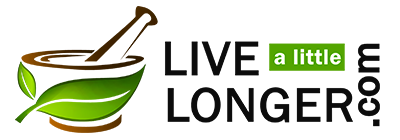In the first few years of your newborn’s birth, you might feel as if you are doing nothing other than changing his or her diapers. While it can be a slight inconvenience, the number of diapers your little one soils can actually tell if he or she is healthy. Now, when it comes to newborns, a very frequently asked question by different mothers is none other than – how many diapers does a baby use in a year or how many diapers does a newborn use a day? Well, the answer to these questions are not exact. However, we will give you a rough calculation through this article. Read further.

How Many Diapers Does A Baby Use In A Year?
Understand that every baby is different and so are his or her diaper requirements. According to experts, a baby needs 8 to 10 diapers a day (in the 1st year). So, for a year, the estimation would be:
Diaper Requirements per Year = 365 days × 8 to 10 diapers a day = 3650 to 4380
In the early months, a baby should be pooping 3 or 4 and peeing roughly 7 times a day. This is the reason why they use 8 – 10 diapers in the early development stages. However, this lessens once he or she grows up. As a mother, you will certainly be frustrated to change your baby’s diapers all day but you will be interested in reading the fact that frequent diaper changing is good for your baby’s health. If you don’t change it often, it might lead to health issues. Changing the diapers pretty often is an indication that your newborn is eating well and getting the right nutrition.
Hope you are clear with the questions — how many diapers does a baby use in a year and how many diapers does a baby use a day. Now, there are still few other important things you need to know about diapers, especially if you have just delivered your baby.

How Much Do Diapers Cost A Month?
How To Choose The Right Diaper For You
There’s no right or wrong answer to what kind of diaper to buy. Ultimately, you need to decide the type of diaper that best suits your lifestyle, your needs and your budget. It doesn’t have to be a proposal of one or the other. Many parents decide to use a combination of fabric diapers and disposable diapers depending on the situation.
Some things to consider when choosing diapers:
– If your child is in the nursery, some centers only accept disposable nappies.
– Some parents choose cloth diapers during the day when they can provide more frequent changes and disposable diapers at night to prevent leakage and keep the child comfortable.
– Some parents choose to use cloth nappies at home and disposable nappies when they leave to maximize convenience.
– During the holidays, you may also want to bring a supply of diapers with you so that your child can play in the water.
Disposable Nappies
Many parents choose disposable nappies for convenience and ease of use. These diapers are super absorbent and typically have adhesive or velcro closures. They are available in a variety of sizes for premature to large children.
Biodegradable diapers
Some disposable diaper companies now offer “green” options for disposable diapers. These nappies typically contain less or no chemicals, fragrances and dyes and use natural materials such as corn or wood pulp that are more likely to be biodegradable in sanitary landfills.
How Often Should You Change Your Baby’s Diapers?
Here are few important things to make a note of:
Diapers have to be replaced with new ones once they are dirty and wet. If you keep them for a long time, bacteria and urine can lead it to rashes, making it painful and tough to treat. Always, change your baby’s diaper prior feedings and right after they are wet. It is certainly not a good option to wake your little one at night just change his or her diaper.
Babies have soiled diapers for every 1 – 3 hours in a 24-hour period. They have bowel movement at random times in the day. With wet diapers, newborns don’t fuss. Hence, you have to check their diapers. Disposable diapers are highly absorbent. Therefore, it can be little hard to say how soaked they are.
Detailed Explanation: How Many Diapers Does A Baby Use A Day?
Though the answer to this question has already been given in the beginning of this article, we still thought to write about this in detail here. As a parent, you need to keep an eye on this. If your baby doesn’t uses the requires wet diapers a day, chances are that he or she is having dehydration or some other medical problems. Believe it or not, lack of soiled diapers could mean anything from mild constipation to serious digestive issues. The number of wet or soiled diapers is a clear sign that your little one is obtaining enough to eat and drink every day.
1. Newborn – 1 Month
Babies under 1 month old require to have 6 or more soiled diapers a day. They generally have about 3 – 4 bowel movements in a day. If your newborn is 1 month old or even less, he/she must have quality wet diapers changed. At least 6 or more times per day. Also, keep in mind that he or she should have 3 to 4 bowel movements every day. So, in the initial development stages, you will be changing your baby’s diapers 10 times a day.
2. A Month and Above
1 month and older babies continue to use at least 4 to 6 wet diapers per day. The bowel movements depend on his or her exact age and the foods he/she is consuming. Note that your baby’s bowel movements should stay soft at least for 3 months. This ensures that he/she is getting the right nutrition from healthy fluids. Once they are a month old, their bowel movements tend to reduce. The stools are soft because they are still taking breast or formula milk. Make a note that breast-fed babies have more frequent and softer stools whereas formula-fed babies have less frequent and firmer stools.
The below table gives a clear explanation as to how many diapers will a newborn use in his or her 1st year:
| Age | Diapers Required A Day | Diapers Required A month |
| 0 to 1 month | 10 to 12 | 320 |
| 1 to 5 months old | 8 to 10 | 870 |
| 5 to 9 months | 8 | 870 |
| 9 to 12 months | 8 | 728 |
How To Track Diaper Changes?
Diaper-changing requires proper tracking too because wet and dirty diapers are indications that your baby is receiving adequate to eat and drink. Though every child has different stool and urine schedules, typically, a baby should change 6 diapers a day (at least). On the other hand, if your baby is not producing enough stool and urine, it is an obvious sign that he/she is not acquiring the correct nutrition. Consult your doctor as soon as you can.
Older Babies and Potty Training
Eventually, your baby will reach a development phase where he/she will no longer require diapers. Within 18 months, majority of kids will have control on their bladders. But, this does not mean that they are 100% ready mentally to begin potty training. Around 22% children are free from diapers only when they are 2 ½ years old whereas the rest is free in 3 ½.
Note: If your child remains dry without changing diaper for two consecutive hours, try teaching him/her to use toilet.
How To Change Your Baby’s Diapers?
Diapers can be classified into 2 types:
- Disposable diapers
- Cloth diapers
A. Changing Disposable Diapers
The steps to change a disposable diaper are given below:
1. Preparation
It is important to be hygienic while changing your baby’s diaper. First, wash your hands thoroughly with soap and water. Next, all the required items ready:
- A new disposable diaper
- Baby powder
- Baby lotion
- Wipes
- Diaper cream (if he/she has rashes)
- Wet washcloth
- Plastic bag for wrapping the old diaper in
Spread a soft, clean blanket on any flat surface – perhaps, floor, table or bed. Whatever place you choose, ensure that the surface is high enough to hold your baby up and change the diaper comfortably.
2. Remove The Dirty, Wet Diaper
Lay your little one down. Undo the diaper tabs and fold them into half. This will make sure that it doesn’t stick onto your newborn’s skin. Take the front part of the diaper and fold the diaper’s front side down (for a baby boy, don’t forget to place a washcloth over his penis or you might get sprayed). If there is a bowel movement at this time, use the diaper’s front to wipe it off. Hold the baby’s legs up with 1 hand and grab the wipe with the other. Clean the soil completely. Finally, pull the dirty, wet diaper out and place it on the side.
3. Place A Fresh Diaper
Put the backside of a fresh diaper (the part that has tabs) under the baby’s bottom. Make sure that it sits right at the baby’s waistline. Now, open the diaper’s front and pull up between the legs. Spread the diaper’s front, open its tabs from the backside and pull across the diaper’s front.
4. Wash Your Hands
Once the diaper-changing process is done, wash your hands again to prevent infection.
Here is a video on how a disposable diaper is changed:
B. Changing Cloth Diapers
The steps to change a cloth diaper are given below:
1. Preparation
It is important to maintain proper hygiene while changing your baby’s diaper. First, wash your hands thoroughly with soap and water. Next, all the required items ready:
- A new cloth diaper
- Baby powder
- Baby lotion
- Wipes
- Pins or diaper fasteners
- Diaper cream (if he/she has rashes)
- Diaper liner
- Waterproof diaper cover
- Wet washcloth
- Plastic bag for wrapping the old diaper in
Spread a soft, clean blanket on any flat surface – perhaps, couch, floor, table or bed. Whatever place you choose, ensure that the surface is high enough to hold your baby up and change the diaper comfortably.
2. Remove The Dirty, Wet Diaper
Fold the new diaper and lay it on the side. Unhook the cover and pull the front. Unlock the wet diaper and pull its front down. For a baby boy, don’t forget to place a washcloth over his penis or you might get sprayed. Pull the front side of the diaper down. Wipe off if there is any soil. Clean the baby’s bottom properly. Hold your baby’s legs with 1 hand and grab the wipes with the other. Remove the dirty diaper from the baby’s bottom.
3. Place A Fresh Cloth Diaper
With 1 hand, hold your baby’s legs up again and slide a fresh cloth diaper under his or her bottom with the other. Set the baby’s bottom back and pull the front side up. Place the absorbent liner in. Fasten each side with the help of a diaper fastener. Put the diaper cover under your baby’s bottom, pull the front side up and finally, fasten each side.
4. Wash Your Hands
Once the diaper-changing process is done, wash your hands again to prevent infection.
5. Clean The Dirty Cloth Diaper
Take that dirty diaper to the toilet, rinse the excess urine or bowel movement, and wring out. Use a separate baby soap to wash. Again wash your hands with soap.
Here is a video on how a cloth diaper is changed:

- Wash your hands with soap before and after changing your baby’s diapers. You can even use a hand sanitizer.
- Always keep a soft washcloth with you while changing the diaper of a baby boy, as he can urinate and spray when his diaper is off.
- Initially, you it might be little inconvenient to change diapers but after proper practicing, you will find it easy.
- Patience is the key here. If you are nervous while changing the diaper, your baby becomes fussier.
- As a parent, it is very important to track down how many diapers and bowel movements your baby is having because if this is not right, you will have to check with a pediatrician.
- Older babies may get wiggly while having their diapers changed. Hence, it is wise to give toys to keep them distracted.


